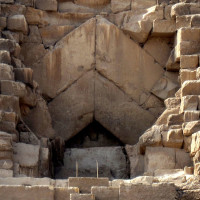
The Pyramid of Cheops (or Khufu) is the oldest and largest of the three pyramids in the Giza Necropolis
A project has been launched with the goal of scanning Egypt’s pyramids to find secrets about how they were built, and even discover hidden rooms and chambers.
The project, headed by Egypt’s antiquity ministry, consists of a team of experts from Japan, France and Canada whose aim is to use infrared scanners and rare, esoteric cosmic ray detectors to map the interior of several pyramids, including the Pyramids of Cheops and Chephren at Giza. The team said it may also use the same technique to prove (or disprove) a theory that the legendary Queen Nefertiti is buried in a chamber next to Tutankhamun.
A muon-scanning cosmic ray lab, similar to the type that peered inside Japan’s Fukushima reactor, will be set up in Egypt to aid with the scans. Muon particles come from deep space and penetrate much deeper than, say, X-rays, so they are particularly good at finding deep underground voids that could indicate a chamber or tunnel. Such scans are fairly low-resolution and take weeks to complete, however. “A similar attempt was made 30 years ago, but this is the first project at a global level using cutting-edge technology to look inside the pyramids,” said a French researcher participating in the project. “The idea is to find the solution to the mystery of the pyramids.”










